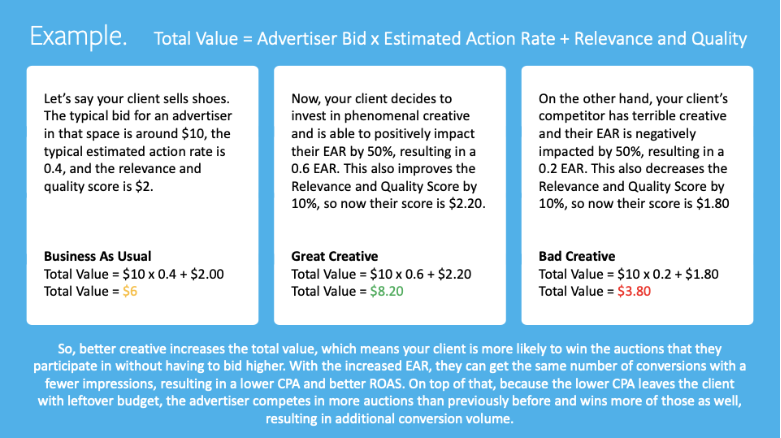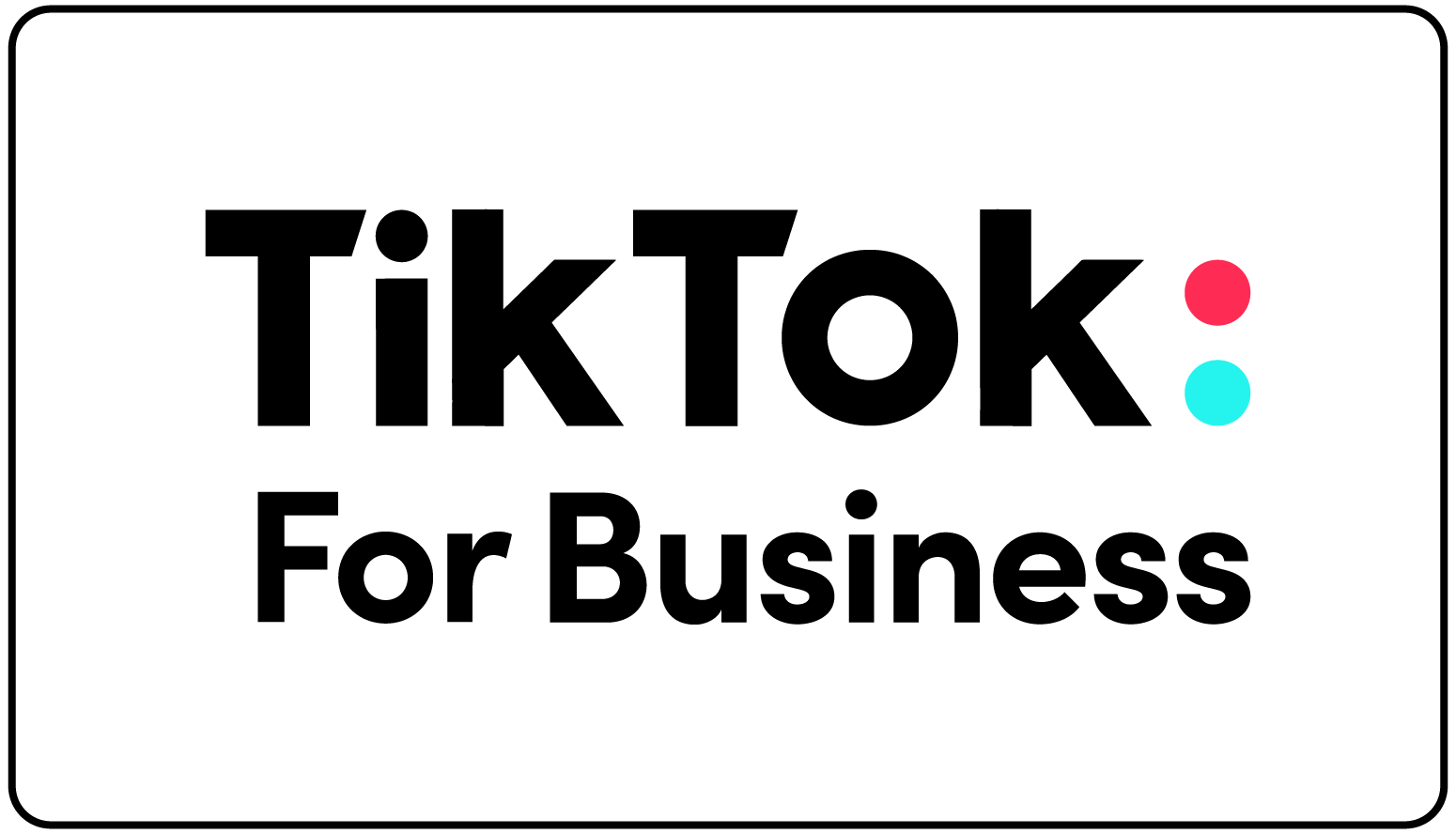When it comes to increasing your paid social ROAS, or return on ad spend, there are many factors that come into play that will make a direct impact on your performance. It’s important to track the efficacy of every digital advertising campaign and ROAS helps you with this evaluation. Debatably one of the most important marketing metrics, ROAS answers one of the biggest questions in marketing: “if I spend X amount of money on ads, how much revenue will I make in return”? Let’s take a closer look at what ROAS is, why it’s important, how to improve it, what makes a good ROAS, and how to accurately calculate this metric.
What Is ROAS?
ROAS is what companies use to analyze the profits made by advertising campaigns. The goal is to track the success of the marketing campaign to ensure they’re making a profit on the digital advertising campaigns.
By studying ROAS, companies can get a better understanding of how effective their advertising is in the grand scheme of business.
In general, ROAS shows how profitable a company is compared to its total advertising spend—or how effective the advertising is. ROAS can provide valuable insight for a company, telling an analyst or investor how well a company is generating earnings by advertising. ROAS allows companies to directly attribute ad spend to revenue.
Successful businesses rely on efficiency and profitability.
Why Is ROAS Important?
ROAS allows companies to track how their campaigns are performing and specifically how the ad campaigns influence business revenues.
The insight from ROAS can help direct future business strategy, investments, and marketing. Experts recommend that companies keep a close watch on ROAS as they make advertising decisions and aim to grow their business.
The bottom line is, if a company did not earn money on their advertising campaign, the campaign did not work. Keep reading to learn what makes a healthy paid social ROAS.
How Can Companies Improve Their ROAS?
Knowing whether advertising is bringing in revenue is critical for businesses and studying ROAS enables companies to know whether their marketing campaigns are working.
A profitable ROAS can determine the success of a new business, so it’s critical to analyze the advertiser’s conversion rates. Advertisers want high conversion rates—which correlates to high ROAS. There are a variety of ways to improve paid social ROAS including, but not limited to, designing a mobile-friendly website, optimizing landing pages, targeting different audiences, and having strong content and creative.
When it comes to creative, dynamic testing is a great way to find top-performing creative. For example, if it is uncertain what will work, test one creative against another and compare the ROAS of the two assets.

Another way to increase ROAS is through audience testing. Targeting different audiences can really affect the ROAS of your campaign. Facebook offers different targeting options through custom and lookalike audiences. Try these audiences and see what works best for the campaign at hand. The image below highlights the effect of good creative on the total value of a paid social campaign.
To improve ROAS, companies may consider hiring services to track ROAS. These services help businesses create realistic goals and numbers.
Companies should not rely on ROAS alone to determine whether the advertising campaign is of value. Other factors should be considered—such as the goal of the campaign, the conversion rate, the length of the customer journey, and money being spent.
What is a Good ROAS?
Now that you know what ROAS is and why it’s important, this question still remains. The truth is, there really is not one simple answer to this question. Depending on a company’s campaign objective, paid social ROAS could be greatly affected. On Facebook, objectives range from traffic campaigns to conversion campaigns. Typically, conversion campaigns work best for a ROAS-driven marketing initiative. For a company that is selling video courses without any marginal costs, they may shoot for a ROAS over 1 or 2 since this ROAS is profitable for them. On the other hand, a retail store that sells shoes with 50% of the revenue in a sale may need to shoot for a higher ROAS like 3 or 4 since the company has additional costs to consider.
Let’s compare a sports team to an ecommerce company. A sports team’s main objective is to maximize ticket sales while a t-shirt ecommerce company is focused on selling as many t-shirts as possible. For the sports team, a ticket costs $80 while for the t-shirt company, t-shirts are $15 each. It is much easier for the consumer to make a $15 purchase than an $80 purchase. In this scenario, ROAS may be affected since the cost of the product is much different from the other. For the sports team, there are more considerations at play. For example, the consumer would have to figure out where the seats are located, check their schedule to see which game would work best, and invite friends or family to attend the event. On the other hand, a t-shirt is a pretty straightforward purchase that does not require as much commitment as a sporting event. The consumer considers the size and style of the t-shirt, but the purchase can be easily made.
There are also different objectives for companies in unrelated industries. Let’s take a look at an ecommerce company versus a professional sports team. An ecommerce company that sells t-shirts will be very focused on increasing purchases while a sports team will be focused on increasing ticket sales and brand awareness.
If ROAS is less than one, then the ad is losing money. So, what if ROAS is greater than one? ROAS operating above one is profitable and thus can be considered successful. ROAS of 3:1 or $3 revenue to $1 ad spend is a good baseline but is not considered a highly exciting number. 4:1 ROAS or $4 revenue to $1 ad spend is a very common goal in which campaigns are getting exciting and profitable. 5:1 ROAS or $5 revenue to $1 ad spend and greater are considered a big win. Ultimately, a higher paid social ROAS means more revenue is being driven from the campaign. When performance is good, ad spend can be turned up to lean into the performance. Increased ad spend can then lead to a boost in ROAS. If performance is suffering, budgets are typically lowered or campaigns are turned off.

Creative has a big effect on the performance of ad campaigns. If creative isn’t up to Facebook’s standards, ROAS will naturally be lower while strong creative boosts ROAS. It’s important to find creative that will resonate with your audience. Many times, creative testing can assist with finding what assets perform the best. This is a cost-effective way to discover top-performing creative assets.
Another consideration when it comes to calculating ROAS is seasonality. For ecommerce brands, the holiday season boasts higher ROAS than it does in, say, February. Around the holidays, ROAS tends to be higher since consumers are in a purchasing state of mind while in the off-season, ROAS tends to be lower. When looking at ROAS as a whole, monthly ROAS versus yearly ROAS will look different when seasons come into play.
What Are The Limitations Of ROAS?
Despite ROAS being a great KPI to track effectiveness of paid social campaigns, ROAS does have limitations to consider. For example, a positive ROAS does not necessarily mean that a business is making a profit off of a given campaign. There are a lot of other considerations like advertising costs, an agency’s fee to run the digital marketing campaigns, and cost of goods sold. These factors are not always seen in the ROAS calculation. Paid social ROAS is a great measure of success of advertising campaigns but doesn’t fully highlight the profitability of a business.
When a company is selling more expensive products, then the path to purchase is going to require a bit more time. For example, if a company sells mattresses at a price of $1,200, a consumer may need more time to consider purchasing this product, and the volume of purchasers may be lower than an online candle store that sells candles for $25 each. The mattress company may use cost per purchase as their main KPI rather than ROAS since ROAS doesn’t provide an accurate picture of profitability. The company may have a target cost per purchase instead of a ROAS goal. If the company invests $1,000 in advertising and sells 2 mattresses at $1,200, then the ROAS would be 2.4 yet if the candle company invests $1,000 and sells 200 candles at $25 per candle, the ROAS would be 5. In this scenario, it is easier to sell candles than it is to sell mattresses since the consideration stage is not as intense for the candle business. It takes more advertising dollars to sell a mattress than it does to sell candles.
How Can You Calculate ROAS?
To calculate ROAS, divide the income of the ad source by the cost of the ad source. ROAS reveals the earnings made from the campaign. For instance, if your sales are $1,000 and you paid $500 in ad spend, the ROAS is 2.0.
ROAS is a valuable metric when calculating profitability. Through paid social advertising, companies can set their advertising spend on a campaign and know how much revenue is being generated. With this targeted approach, companies can make more confident decisions on how to invest ad dollars and learn what areas may need more fine-tuning.
The key to improve paid social advertising is tracking conversions and sales. By studying conversion and sales, this reveals what campaigns and ads are producing the most revenue. While studying ROAS is important, It’s easy to forget the driving metrics (CPM, cost per click, click-through rate) when determining a campaign’s performance. For example, when cost per click goes up and click-through rate goes down, then it’s probably time for a creative refresh. These numbers can then influence conversion volume, value, and costs. Studying these metrics can help companies set reasonable and realistic ROAS goals that make sense for their business models.
Companies should also factor in outside costs, such as partner and vendor retainers or any commissions paid to affiliates when calculating overall ROAS.
When it comes to investing in paid social campaigns, there are many factors that come into play in order to have a healthy ROAS. This is an important metric for companies of all industries as it directly relates ad spend to revenue. Use ROAS to determine the effectiveness and profitability of digital advertising efforts. It is a great way to baseline the progress of advertising campaigns and develop paid social campaigns further.




